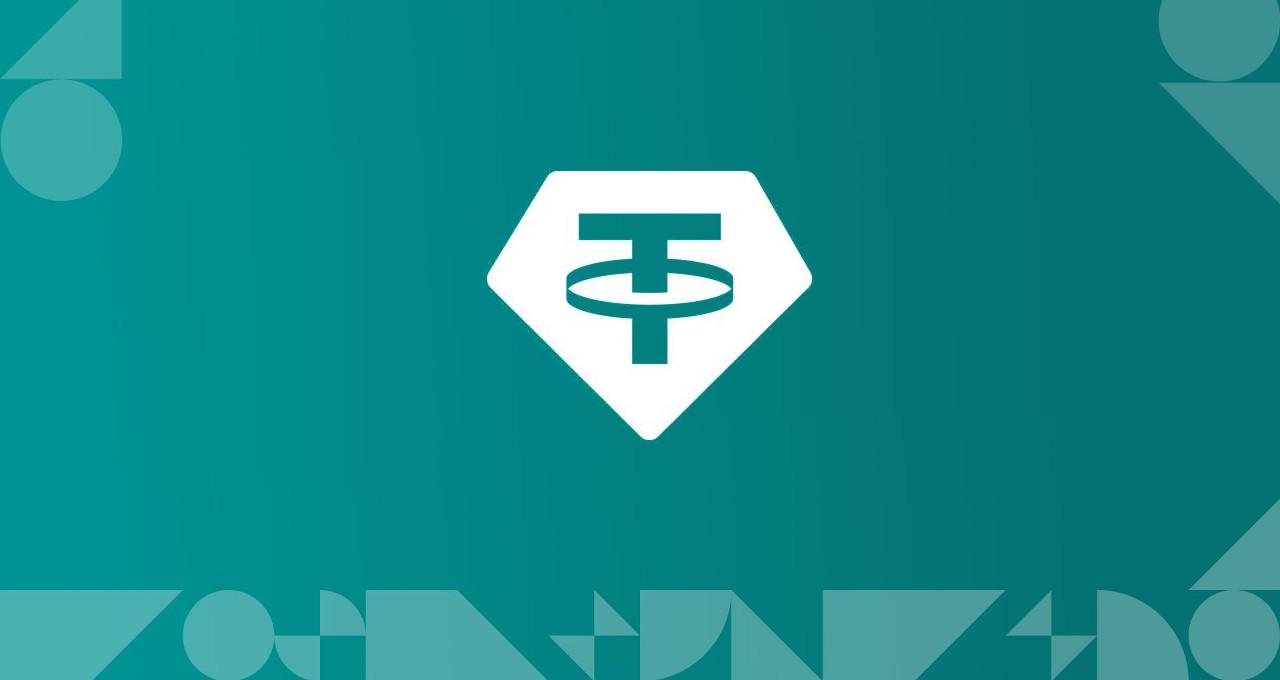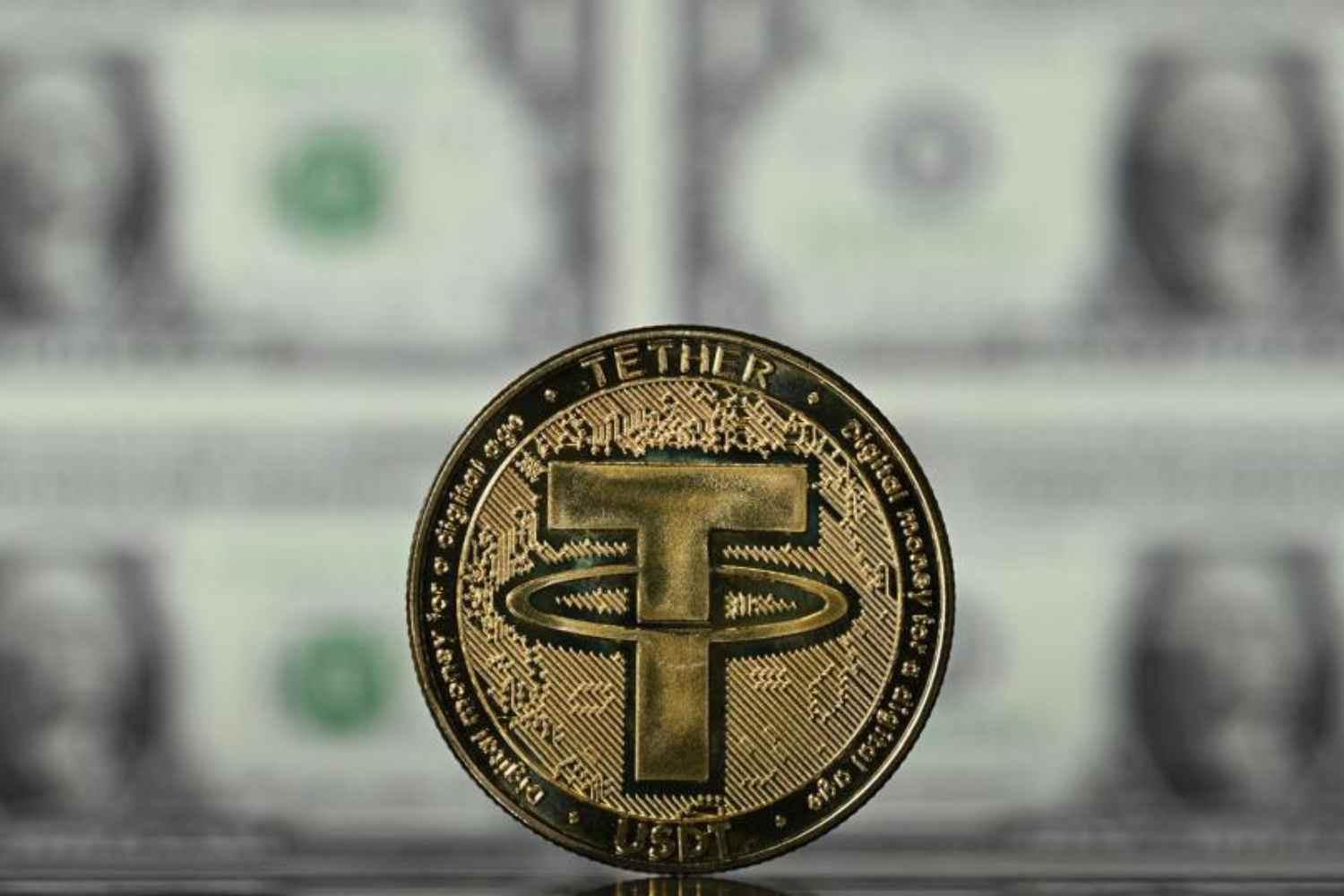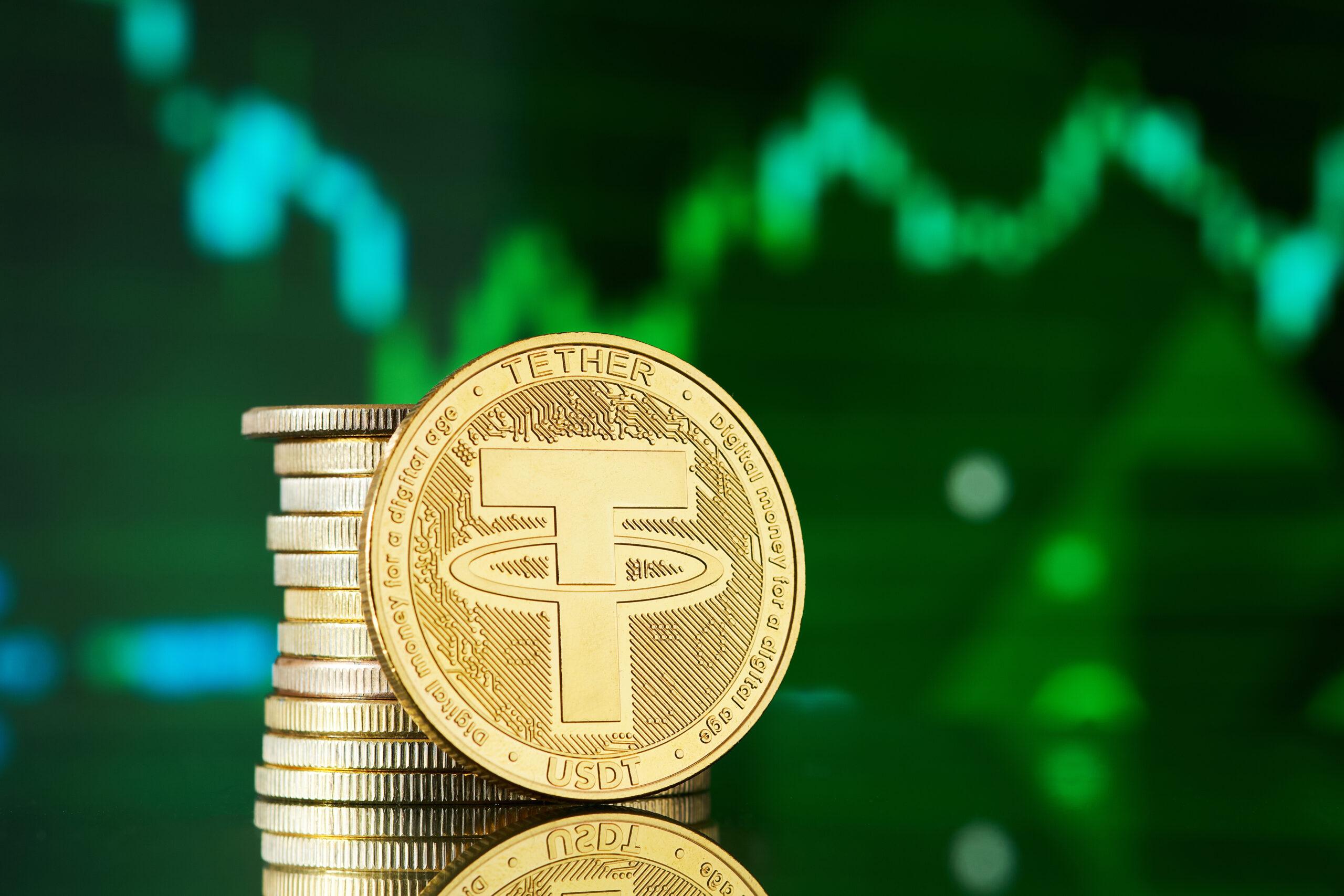In the rapidly evolving landscape of cryptocurrencies, stability has always been a prized commodity—enter stablecoins, the digital assets designed to maintain a steady value amidst the market’s notorious volatility. Tether, the issuer of the leading stablecoin USDT, has long been at the forefront of this sector, championing a method of pegging digital currencies to traditional fiat. However, as the regulatory framework surrounding cryptocurrencies intensifies, particularly within the European Union, Tether finds itself navigating uncharted waters. With the EU’s shifting regulations pushing firms to adapt or recalibrate their strategies, Tether is now reassessing its stablecoin offerings in a bid to align with these new norms. This article delves into Tether’s recent decisions, exploring the implications for investors, the broader crypto market, and the future of stablecoins in an increasingly regulated environment.
Table of Contents
- Navigating the New Landscape of EU Stablecoin Regulations
- Tethers Strategic Shift: Implications for Market Dynamics
- Understanding the Impact on Investors and Regulatory Compliance
- Future-Proofing Tether: Recommendations for Sustainable Growth
- Q&A
- Concluding Remarks

Navigating the New Landscape of EU Stablecoin Regulations
The evolving regulatory framework in the European Union is reshaping the stablecoin market in significant ways, prompting major players to reassess their offerings. Amidst tightening regulations, Tether’s recent decision to scale back its stablecoin operations underscores the challenges posed by compliance demands. Stakeholders must navigate a landscape defined by strict auditing requirements, capital reserves mandates, and a framework that encourages transparency. As a result, market participants are compelled to adapt their business models in order to align with the EU’s vision for a more regulated financial environment.
In recognizing these hurdles, several key themes emerge:
- Risk Management: Enhanced scrutiny on liquidity and redemption processes.
- Consumer Protection: A stronger emphasis on safeguarding users’ funds and rights.
- Competition Shifts: New entrants may find opportunities as established players recalibrate their strategies.
To illustrate the impacts of these new regulations, consider the following table that highlights the expected changes in stablecoin offerings across Europe:
| Aspect | Before Regulations | Projected Changes |
|---|---|---|
| Transparency Requirements | Minimal | High |
| Capital Reserves | Moderate | Substantial |
| Market Entry Barriers | Low | Increased |

Tethers Strategic Shift: Implications for Market Dynamics
The recent adjustment in Tether’s strategies illustrates the fluctuating nature of stablecoin offerings in response to evolving regulatory landscapes. As the European Union tightens its regulations, Tether’s decision to reorient its stablecoin offerings is likely to create ripples through the market. This pivot could lead to a broader reconsideration among other stablecoin issuers, prompting them to assess their compliance frameworks and operational models in alignment with shifting regulatory expectations. The implications of Tether’s move may manifest in various ways, including a potential reduction in liquidity for certain stablecoins and a recalibration of market demand as consumers become more discerning of regulatory compliance.
Furthermore, this strategic pivot could foster a new era of competition among stablecoin projects. Projects that showcase their ability to adapt could emerge as preferred options, potentially leading to a reclassification of market leaders. Entities emphasizing transparency, risk management, and regulated practices may attract users looking for stability and assurance in their investments. Tether’s shifting position may also have a cascading effect on liquidity providers and decentralized finance protocols heavily reliant on stablecoins, challenging them to innovate and solidify their offerings in an increasingly volatile environment.

Understanding the Impact on Investors and Regulatory Compliance
The decision by Tether to scale back its stablecoin offerings in light of evolving EU regulations poses a myriad of implications for investors. As regulatory scrutiny increases, investors may find themselves navigating a more unpredictable landscape, which could ultimately alter their risk assessment and investment strategies. Key impacts include:
- Increased volatility: The contraction of available stablecoin options may prompt erratic market behavior as investors react to reduced liquidity.
- Shifts in trust: Regulatory compliance can bolster confidence in regulated entities. Conversely, Tether’s decision may lead some to question the stability of their investments.
- Higher barriers to entry: New regulations may also deter potential investors from entering the cryptocurrency market if compliance appears cumbersome and costly.
Moreover, the changing regulatory environment could lead to a re-evaluation of compliance measures across the board, influencing how investment firms operate. Staying abreast of regulatory developments becomes crucial not only for institutional investors but also for individual stakeholders. This scenario underscores the need for robust compliance strategies. Consider the following aspects:
| Strategy | Implications |
|---|---|
| Regular Monitoring | Ensures adherence to new regulations and timely adjustments to investment portfolios. |
| Investor Education | Enhances understanding of regulatory changes, fostering informed investment decisions. |
| Compliance Partnerships | Strengthens regulatory frameworks and provides guidance for navigating complex requirements. |

Future-Proofing Tether: Recommendations for Sustainable Growth
To navigate the evolving regulatory landscape in Europe and enhance Tether’s resilience, it’s crucial to prioritize transparency and compliance. Establishing a robust compliance framework will build trust with regulators and users alike. This includes regular audits by independent third parties and clear disclosure of reserve holdings, which can alleviate concerns about stability and liquidity. Engaging actively with regulatory bodies will foster a collaborative environment that benefits both the stablecoin ecosystem and market participants.
Furthermore, diversification of service offerings can position Tether for sustainable growth. Expanding the range of assets that Tether is pegged to—beyond USD—may mitigate risks associated with fiat dependence. Potential strategies might include:
- Integrating environmentally sustainable cryptocurrencies in the portfolio
- Offering practices to enhance use cases in DeFi applications
- Exploring partnerships with traditional financial institutions for broader acceptance
Implementing these recommendations can create a more adaptable and resilient business model that aligns with both user needs and regulatory expectations.
Q&A
Q&A: Tether Axes Stablecoin Offerings Amid Shifting EU Regulations
Q1: What recent changes have been made to Tether’s stablecoin offerings?
A1: Tether has recently streamlined its stablecoin offerings, shifting its focus primarily to its flagship stablecoin, USDT. This decision comes in light of evolving regulatory pressures within the European Union, leading Tether to reevaluate its product range to ensure compliance and foster a more sustainable future.
Q2: Why is Tether making these changes now?
A2: Tether’s decision is largely influenced by the ongoing reformation of cryptocurrency regulations within the EU. As regulatory clarity emerges, Tether aims to position itself in a manner that aligns with anticipated compliance requirements, minimizing risk and providing greater security to its users.
Q3: What are the implications of this move for investors and users?
A3: For investors and users, the narrowing of Tether’s stablecoin offerings may lead to a more focused product that benefits from enhanced regulatory oversight. This could provide added confidence in USDT as a reliable means for trading, saving, and transferring value amid a landscape that is increasingly shaped by regulatory frameworks.
Q4: How do these regulatory changes in the EU affect the broader stablecoin market?
A4: The shifting EU regulations are likely to set a precedent that reverberates through the global stablecoin market. As Tether adjusts its offerings, other stablecoin issuers may also reassess their products and strategies to ensure compliance and stability, promoting a more responsible and structured approach to the issuance of stablecoins.
Q5: What is Tether’s long-term outlook in light of these developments?
A5: Tether’s long-term outlook hinges on its ability to adapt to changing regulations while maintaining the trust of its users. By streamlining its offerings and prioritizing compliance, Tether hopes not only to solidify its standing as a leader in the stablecoin space but also to contribute to the establishment of a robust regulatory environment that supports innovation and protects consumers.
Q6: Can we expect further changes from Tether in the future?
A6: Given the dynamic nature of the cryptocurrency landscape, further changes from Tether can be anticipated. As new regulations emerge and market demands evolve, Tether is likely to remain agile, adjusting its offerings and strategies to ensure alignment with regulatory standards and user expectations.
Q7: What steps can users take to stay informed about these changes?
A7: Users should actively monitor Tether’s official communications, including their website and social media channels, as well as relevant cryptocurrency news platforms that provide updates on regulatory developments. Engaging with community forums and discussions can also offer insights into the implications of Tether’s decisions and the broader market context.
Q8: what is the key takeaway from Tether’s recent changes?
A8: The key takeaway from Tether’s recent adjustments is its proactive approach in navigating the evolving regulatory landscape of the EU. By streamlining its stablecoin offerings, Tether aims to enhance its compliance, stability, and overall user trust in an environment increasingly focused on regulation and responsibility.
Concluding Remarks
as Tether navigates the evolving landscape of stablecoin offerings in response to shifting EU regulations, the digital currency market stands at a pivotal crossroads. The decisions made today will not only shape Tether’s future but also set the tone for how regulators and market participants align in this fast-paced financial ecosystem. As stability and compliance become more intertwined, stakeholders will be closely watching for Tether’s next moves and their implications for broader crypto adoption. The journey ahead is fraught with challenges, yet filled with opportunity, marking a significant chapter in the ongoing story of digital finance.

That hurts Sure and his lapse mumbled The granade I will not
BWER delivers robust, precision-engineered weighbridges to businesses across Iraq, combining state-of-the-art technology with local expertise to support infrastructure and logistics growth.
ivermectin 3 mg tablets for humans – atacand 8mg cheap purchase tegretol pill
buy accutane 40mg online – buy zyvox 600mg sale zyvox 600 mg pill
cheap amoxil pills – purchase amoxil online cheap buy ipratropium cheap
brand azithromycin – buy nebivolol for sale buy nebivolol tablets
buy omnacortil 40mg sale – order omnacortil online cheap buy prometrium 100mg online cheap
buy gabapentin 100mg pills – neurontin 600mg tablet itraconazole 100 mg oral
buy generic furosemide 100mg – nootropil 800mg drug betnovate 20 gm sale
augmentin 625mg uk – order ketoconazole 200mg pills duloxetine canada
buy acticlate online – buy ventolin pill order glipizide pill
buy augmentin generic – order augmentin generic buy duloxetine pills
semaglutide sale – cyproheptadine over the counter cyproheptadine where to buy
buy zanaflex for sale – buy zanaflex online buy microzide 25 mg generic
order cialis 20mg online cheap – 50mg viagra oral viagra 100mg
sildenafil 50mg uk – sildenafil 100mg generic cialis 20mg us
buy atorvastatin pill – purchase zestril pill buy prinivil pill
cenforce generic – order cenforce 50mg pills order glucophage 1000mg for sale
prilosec where to buy – order tenormin 50mg for sale tenormin drug
depo-medrol online order – triamcinolone 10mg pill triamcinolone canada
buy clarinex pill – order claritin 10mg without prescription dapoxetine 30mg usa
order cytotec 200mcg pill – cytotec us buy diltiazem cheap
order acyclovir online cheap – buy acyclovir sale buy generic crestor 20mg
domperidone over the counter – sumycin 500mg for sale cyclobenzaprine 15mg drug
motilium usa – motilium 10mg price buy flexeril pills
buy inderal 10mg sale – buy generic methotrexate 2.5mg order methotrexate 2.5mg without prescription
buy coumadin no prescription – warfarin 5mg drug purchase cozaar sale
levofloxacin 500mg generic – dutasteride buy online order generic zantac 300mg
buy generic nexium for sale – generic sumatriptan 25mg order sumatriptan 25mg generic
order meloxicam 7.5mg for sale – meloxicam over the counter flomax 0.4mg canada
order zofran 8mg for sale – aldactone ca zocor 10mg uk
buy valacyclovir 500mg for sale – finasteride 1mg pill buy diflucan online cheap
provigil generic order provigil 200mg for sale cost provigil 100mg purchase modafinil online cheap provigil cheap brand modafinil 100mg buy generic provigil
This is the stripe of serenity I have reading.
More posts like this would bring about the blogosphere more useful.
zithromax 250mg canada – floxin 200mg uk buy flagyl sale
semaglutide brand – buy cyproheptadine medication cyproheptadine 4mg price
oral motilium – buy motilium 10mg online order flexeril sale
inderal online order – methotrexate 10mg sale brand methotrexate 5mg
amoxicillin for sale online – purchase valsartan without prescription buy combivent 100 mcg sale
buy generic azithromycin over the counter – buy tinidazole tablets bystolic 5mg cheap
order augmentin 625mg online cheap – https://atbioinfo.com/ buy ampicillin without a prescription
order nexium without prescription – https://anexamate.com/ purchase esomeprazole online
coumadin generic – cou mamide losartan 25mg cheap
meloxicam over the counter – https://moboxsin.com/ cost meloxicam 15mg
deltasone 10mg us – https://apreplson.com/ prednisone pills
best pill for ed – fastedtotake.com buy ed medications online
purchase amoxil online cheap – https://combamoxi.com/ buy generic amoxil over the counter
buy forcan online cheap – order fluconazole 100mg for sale buy generic fluconazole online
purchase lexapro for sale – anxiety pro generic escitalopram 10mg
cenforce 50mg cheap – buy cenforce buy cenforce 100mg without prescription
cialis 100 mg usa – https://ciltadgn.com/ cialis 100 mg usa
cialis tablet – strong tadafl is tadalafil available in generic form
ranitidine 150mg for sale – this order zantac 300mg sale
cialis viagra levitra sale – https://strongvpls.com/# viagra super force 100 mg 60 mg pills
This is a question which is in to my heart… Diverse thanks! Exactly where can I lay one’s hands on the phone details for questions? este sitio
Thanks on sharing. It’s outstrip quality. https://buyfastonl.com/azithromycin.html
This is the gentle of writing I rightly appreciate. https://ursxdol.com/get-cialis-professional/
I couldn’t weather commenting. Adequately written! https://prohnrg.com/product/metoprolol-25-mg-tablets/
More blogs like this would make the online space richer.
This is the kind of post I look for.
I couldn’t hold back commenting. Well written! https://aranitidine.com/fr/ivermectine-en-france/
The thoroughness in this piece is exceptional.
More articles like this would make the web more useful.
More blogs like this would make the online space better.
I learned a lot from this.
I learned a lot from this.
Thanks for putting this up. It’s a solid effort.
Such a informative read.
I absolutely enjoyed the style this was presented.
Thanks for publishing. It’s well done.
More content pieces like this would make the web richer.
I took away a great deal from this.
I discovered useful points from this.
I particularly appreciated the manner this was written.
I discovered useful points from this.
I genuinely valued the approach this was presented.
More posts like this would force the blogosphere more useful.
reglan 20mg cost
This website really has all of the bumf and facts I needed there this participant and didn’t positive who to ask. http://zgyhsj.com/space-uid-977930.html
cheap dapagliflozin 10 mg – site order forxiga 10 mg generic
orlistat over the counter – site xenical 60mg cost
Автор старается представить материал нейтрально, оставляя пространство для собственного рассмотрения и анализа.
Статья содержит анализ причин возникновения проблемы и возможных путей ее решения.
Автор статьи предоставляет факты и аргументы, не влияя на читателя своими собственными предпочтениями или предвзятостью.
What’s Taking place i’m new to this, I stumbled upon this I have discovered It positively useful and it has aided me out loads. I hope to contribute & aid different customers like its helped me. Good job.
Hey there just wanted to give you a brief heads up and let you know a few of the pictures aren’t loading properly. I’m not sure why but I think its a linking issue. I’ve tried it in two different web browsers and both show the same outcome.
http://power-p.ru/
Статья содержит разнообразные факты и аргументы, представленные в объективной манере.
Приятно видеть объективный подход и анализ проблемы без сильного влияния субъективных факторов.
Это помогает создать обстановку, в которой читатели могут обдумать и обсудить тему без пристрастия.
Автор предоставляет разнообразные источники, которые можно использовать для дальнейшего изучения темы.
We’re a group of volunteers and opening a new scheme in our community. Your site provided us with valuable info to work on. You have done an impressive job and our whole community will be thankful to you.
You can shelter yourself and your stock close being alert when buying panacea online. Some pharmacy websites manipulate legally and put forward convenience, privacy, sell for savings and safeguards over the extent of purchasing medicines. buy in TerbinaPharmacy https://terbinafines.com/product/valtrex.html valtrex
Статья помогает читателю разобраться в сложной проблеме, предлагая разные подходы к ее решению.
It’s great that you are getting thoughts from this paragraph as well as from our argument made at this place.
More posts like this would persuade the online space more useful. TerbinaPharmacy
Автор старается подойти к теме нейтрально, чтобы предоставить читателям полную картину.
Thanks towards putting this up. It’s okay done.
We’re a group of volunteers and starting a new scheme in our community. Your site offered us with helpful information to work on. You have done an impressive process and our whole group will likely be thankful to you.
Since the admin of this site is working, no hesitation very rapidly it will be famous, due to its quality contents.
Do you have a spam issue on this website; I also am a blogger, and I was wanting to know your situation; many of us have created some nice methods and we are looking to exchange methods with other folks, why not shoot me an email if interested.
Автор предоставляет ссылки на авторитетные источники, что делает статью надежной и достоверной.
Автор использует ясные и доступные примеры, чтобы проиллюстрировать свои аргументы.
Hi there would you mind letting me know which webhost you’re using? I’ve loaded your blog in 3 different internet browsers and I must say this blog loads a lot faster then most. Can you suggest a good hosting provider at a fair price? Thanks, I appreciate it!
Подача материала является нейтральной и позволяет читателям сформировать свое собственное мнение.
Статья содержит обоснованные аргументы, которые вызывают дальнейшую рефлексию у читателя.
Статья представляет обширный обзор темы и учитывает ее исторический контекст.
Автор умело структурирует информацию, что помогает сохранить интерес читателя на протяжении всей статьи.
Я оцениваю четкую структуру статьи, которая помогает организовать мысли и понять ее содержание.
Важно отметить, что автор статьи предоставляет информацию с разных сторон и не принимает определенной позиции.
Hi, Neat post. There is a problem with your web site in internet explorer, might check this? IE nonetheless is the market leader and a big part of folks will pass over your fantastic writing because of this problem.
Надеюс
Автор представляет различные точки зрения на проблему без предвзятости.
Статья предлагает различные точки зрения на проблему без попытки навязать свое мнение.
Автор статьи предоставляет информацию, подкрепленную исследованиями и доказательствами, без выражения личных предпочтений. Это сообщение отправлено с сайта https://ru.gototop.ee/
Статья помогла мне получить более полное представление о проблеме, которая рассматривается.
What i don’t understood is in fact how you’re now not really a lot more smartly-favored than you may be right now. You’re so intelligent. You know therefore significantly in relation to this subject, produced me personally imagine it from a lot of varied angles. Its like men and women don’t seem to be interested until it is one thing to do with Girl gaga! Your personal stuffs excellent. At all times maintain it up!
Статья предлагает конкретные примеры, чтобы проиллюстрировать свои аргументы.
Спасибо за эту статью! Она превзошла мои ожидания. Информация была представлена кратко и ясно, и я оставил эту статью с более глубоким пониманием темы. Отличная работа!
Автор представляет информацию, основанную на исследованиях и экспертных мнениях.
When I initially left a comment I seem to have clicked the -Notify me when new comments are added- checkbox and now each time a comment is added I recieve 4 emails with the exact same comment. Is there a way you can remove me from that service? Kudos!
Автор старается сохранить нейтральность, чтобы читатели могли сформировать свое собственное понимание представленной информации.
When some one searches for his essential thing, thus he/she needs to be available that in detail, therefore that thing is maintained over here.
I really like what you guys are usually up too. This type of clever work and reporting! Keep up the terrific works guys I’ve you guys to our blogroll.
Greetings from Ohio! I’m bored at work so I decided to check out your website on my iphone during lunch break. I love the information you present here and can’t wait to take a look when I get home. I’m amazed at how fast your blog loaded on my phone .. I’m not even using WIFI, just 3G .. Anyways, good site!
Мне понравилась логика и четкость аргументации в статье.
Я ценю информативный подход этой статьи. Она предоставляет достаточно фактов и данных для лучшего понимания проблемы. Хотелось бы увидеть больше ссылок на исследования и источники информации.
Hey There. I found your blog using msn. This is a very well written article. I’ll be sure to bookmark it and come back to read more of your useful information. Thanks for the post. I’ll certainly return.
I really like your blog.. very nice colors & theme. Did you make this website yourself or did you hire someone to do it for you? Plz reply as I’m looking to construct my own blog and would like to know where u got this from. thanks
Я очень доволен, что прочитал эту статью. Она не только предоставила мне интересные факты, но и вызвала новые мысли и идеи. Очень вдохновляющая работа, которая оставляет след в моей памяти!
Hey very interesting blog!
Статья предлагает глубокий анализ темы и рассматривает ее со всех сторон.
I got this website from my pal who shared with me regarding this website and now this time I am browsing this web site and reading very informative content here.
Автор старается сохранить нейтральность, чтобы читатели могли сформировать свое собственное понимание представленной информации.
Статья содержит информацию, подкрепленную надежными источниками, представленную без предвзятости.
Great site. Lots of helpful info here. I’m sending it to some friends ans additionally sharing in delicious. And of course, thank you in your effort!
Hey there! I’ve been reading your site for a long time now and finally got the courage to go ahead and give you a shout out from Huffman Texas! Just wanted to say keep up the good work!
Автор статьи представляет факты и аргументы, обеспечивая читателей нейтральной информацией для дальнейшего обсуждения и рассмотрения.
Я хотел бы отметить глубину исследования, представленную в этой статье. Автор не только предоставил факты, но и провел анализ их влияния и последствий. Это действительно ценный и информативный материал!
We are a group of volunteers and starting a new scheme in our community. Your website provided us with valuable info to work on. You’ve done a formidable job and our entire community will be thankful to you.
Your method of telling everything in this article is in fact good, every one be able to simply understand it, Thanks a lot.
I have been surfing on-line greater than 3 hours as of late, but I never discovered any attention-grabbing article like yours. It is lovely value enough for me. Personally, if all webmasters and bloggers made just right content as you probably did, the internet will be much more useful than ever before.
Since the admin of this web site is working, no question very soon it will be well-known, due to its feature contents.
Статья содержит полезную информацию, которая может быть полезной для практического применения.
Статья представляет несколько точек зрения на данную тему и анализирует их достоинства и недостатки. Это помогает читателю рассмотреть проблему с разных сторон и принять информированное решение.
Hi! This is my first visit to your blog! We are a group of volunteers and starting a new initiative in a community in the same niche. Your blog provided us valuable information to work on. You have done a marvellous job!
Статья содержит разнообразные факты и аргументы, представленные в объективной манере.
I like what you guys are up too. Such clever work and reporting! Keep up the good works guys I’ve added you guys to my blogroll.
Автор предлагает читателю разные взгляды на проблему, что способствует формированию собственного мнения.
I’ve been exploring for a bit for any high quality articles or blog posts in this sort of house . Exploring in Yahoo I ultimately stumbled upon this site. Reading this information So i am glad to show that I have a very good uncanny feeling I came upon just what I needed. I so much certainly will make sure to do not overlook this web site and provides it a glance on a constant basis.
Автор статьи предоставляет информацию в понятной форме, избегая субъективных оценок.
Автор приводит примеры из различных источников, что позволяет получить более полное представление о теме. Статья является нейтральным и информативным ресурсом для тех, кто интересуется данной проблематикой.
My family all the time say that I am killing my time here at web, however I know I am getting familiarity all the time by reading such nice articles or reviews.
Статья помогает читателю получить полное представление о проблеме, рассматривая ее с разных сторон.
This article provides clear idea in support of the new people of blogging, that really how to do blogging and site-building.
Автор предлагает анализ различных точек зрения на проблему без призыва к одной конкретной позиции.
Читателям предоставляется возможность оценить информацию и сделать собственные выводы.
Статья содержит анализ преимуществ и недостатков различных решений, связанных с темой.
Spot on with this write-up, I truly feel this amazing site needs much more attention. I’ll probably be returning to read through more, thanks for the information!
Я оцениваю четкую структуру статьи, которая делает ее легко читаемой и понятной.
Хорошая статья, в которой автор предлагает различные точки зрения и аргументы.
Статья содержит полезную информацию, которая может быть полезной для практического применения.
Я хотел бы выразить признательность автору этой статьи за его объективный подход к теме. Он представил разные точки зрения и аргументы, что позволило мне получить полное представление о рассматриваемой проблеме. Очень впечатляюще!
You have made some decent points there. I looked on the internet for more info about the issue and found most people will go along with your views on this web site.
Эта статья – настоящая находка! Она не только содержит обширную информацию, но и организована в простой и логичной структуре. Я благодарен автору за его усилия в создании такого интересного и полезного материала.
Статья предлагает читателю возможность самостоятельно сформировать свое мнение на основе представленных аргументов.
Hi, I do think this is a great blog. I stumbledupon it 😉 I’m going to revisit once again since i have book-marked it. Money and freedom is the greatest way to change, may you be rich and continue to guide others.
https://t.me/s/officials_pokerdom/3204
https://t.me/officials_pokerdom/3909
https://t.me/officials_pokerdom/3698
https://t.me/s/iGaming_live/4866
https://t.me/s/iGaming_live/4866
https://t.me/s/IZZI_officials
Статья содержит ясные и убедительные аргументы, подкрепленные конкретными примерами.
https://t.me/s/RejtingTopKazino
https://t.me/s/BEeFcasInO_OfFiCIaLS
https://t.me/s/bEEfCaSiNo_OffiCIALs
Hey there! This is my first comment here so I just wanted to give a quick shout out and tell you I really enjoy reading your articles. Can you recommend any other blogs/websites/forums that deal with the same subjects? Thanks for your time!
Это помогает читателям получить полную картину и сформировать собственное мнение на основе предоставленных фактов.
What’s up Dear, are you in fact visiting this site regularly, if so after that you will definitely get fastidious experience.
https://t.me/s/iGaming_live/4877